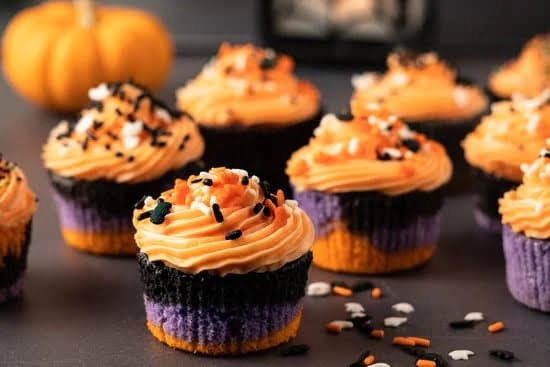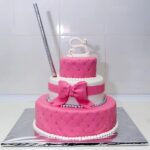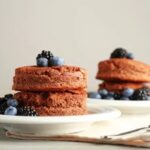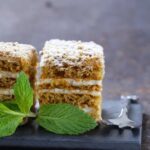Cake decorating is a fascinating craft that combines artistry and culinary skills to create visually appealing and delicious masterpieces. Whether it’s a simple birthday cake or an elaborate wedding cake, the art of cake decorating plays a crucial role in making these confectionary treats truly memorable. This article dives into the world of cake decorating, exploring its history, essential techniques, creative ideas, time-saving hacks, and troubleshooting tips.
In recent years, cake decorating has experienced a surge in popularity as more people discover its transformative power. From intricate designs to whimsical creations, cake decorators have pushed the boundaries of what can be achieved with frosting, icing, and decorative elements. The importance of well-executed cake decorating cannot be understated; it elevates an ordinary dessert into a centerpiece worthy of celebration.
As we embark on this journey into the art of cake decoration, it is essential to understand its historical roots. Cake decorating dates back centuries and can be traced through ancient civilizations like Egypt and Rome. Over time, different cultures have refined and expanded upon these techniques, resulting in the diverse array of styles we see today.
With numerous tools and equipment available in the market specifically designed for cake decorating purposes, it is crucial for aspiring decorators to familiarize themselves with these essentials. From offset spatulas to piping bags and tips, each item serves a specific purpose in achieving professional-looking results. Furthermore, understanding different frosting and icing options allows decorators to select the best one for their desired outcome.
As we continue delving into the enchanting world of cake decorating in this article, we will explore various techniques used by expert decorators to achieve flawless finishes on their creations. Step-by-step guides will cover everything from leveling cakes to filling and crumb coating them before applying smooth frosting or creating textured designs. Additionally, piping techniques for stunning buttercream flowers, borders, and lettering will be showcased along with helpful tips and tricks.
Join us as we venture further into this exciting world of cake decorating, exploring creative ideas for various occasions, time-saving hacks for busy decorators, troubleshooting common issues, and embracing the latest trends and inspirations. Together, let’s discover the joy that comes from creating beautiful works of edible art.
History of Cake Decorating
The history of cake decorating is a fascinating journey that spans centuries and cultures. From ancient civilizations to modern times, the art of cake decorating has evolved and transformed, resulting in the beautiful and intricate designs we see today.
Ancient Origins
Cake decorating can be traced back to ancient Egypt, where elaborate cakes were made for religious rituals and special occasions. These cakes were often shaped like animals or objects and decorated with fruits, nuts, and honey. The Greeks and Romans also embraced cake decoration, using icing made from sugar or honey to create colorful patterns on their cakes.
The Renaissance Era
During the Renaissance era in Europe, cake decoration became more refined and ornate. Intricate royal icing designs in intricate patterns were used to adorn wedding cakes for the wealthy elite. Marzipan was introduced as a popular medium for creating realistic shapes and figures on cakes.
Modern Innovations
In the 19th century, advancements in technology revolutionized cake decorating. The invention of baking powder allowed for lighter and fluffier cakes, making them easier to decorate. The Victorian era saw the introduction of elaborate sugar flowers, delicate lacework designs, and piped royal icing decorations.
In the 20th century, the rise of mass production brought new techniques to cake decorating. Buttercream frosting became a popular choice due to its versatility and ease of use. Wedding cakes adorned with fondant became a staple at celebrations around the world.
Today, cake decorating continues to evolve with new trends emerging all the time. From elaborate fondant creations to minimalist designs featuring natural ingredients like fresh flowers and fruit, there are endless possibilities for expressing creativity through cake decoration.
Understanding the rich history of cake decorating allows us to appreciate both the artistry involved and how far we’ve come. Each cake we decorate is a tribute to centuries of innovation and passion for creating edible works of art.
Cake Decorating Essentials
Cake decorating is both an art form and a way to enhance the taste and visual appeal of cakes. To achieve stunning cake designs, there are certain tools and ingredients that every cake decorator should have in their arsenal. Here is a list of essential cake decorating tools:
- Decorating Bags: These are used for piping frosting onto the cake. Disposable decorating bags are convenient and eliminate the need for cleaning, while reusable ones provide durability.
- Piping Tips: There are various types of piping tips available, each with a distinct design for creating different patterns and designs on the cake.
- Offset Spatula: An offset spatula helps in smoothing out frosting and icing or spreading it evenly across the cake layers.
- Turntable: A turntable is essential for smooth and even frosting application. It allows decorators to rotate the cake while working on it, giving them better control over their movements.
- Bench Scraper: A bench scraper is great for achieving sharp edges on cakes and spreading frosting smoothly around the sides.
Apart from tools, different types of frostings and icings are also crucial in cake decorating:
- Buttercream Frosting: Buttercream is a versatile frosting that can be easily colored, flavored, and textured. It is perfect for piping designs, flowers, borders, and lettering.
- Fondant: Fondant is a pliable icing that can be rolled out to cover cakes entirely or create decorative shapes such as flowers or figurines.
- Royal Icing: This icing hardens when dried, making it ideal for intricate decorations like lacework or delicate sugar flowers.
Using quality ingredients is also crucial in achieving optimal results:
- High-Quality Flours: Using high-quality flours will result in a better texture and taste of the cake.
- Unsweetened Cocoa Powder: For chocolate cakes or frostings, using high-quality unsweetened cocoa powder will produce richer flavor and color.
- Fresh Dairy Products: Fresh butter, milk, and cream will enhance the taste and texture of frostings.
By having these essential tools and ingredients, cake decorators can embark on their creative journeys with confidence, knowing they have the necessary elements to create visually stunning and delicious cakes.
Cake Decorating Techniques
When it comes to cake decorating, there are a variety of techniques that can turn an ordinary cake into a stunning masterpiece. Whether you’re a novice or an experienced decorator, mastering these techniques will allow you to create beautiful and professional-looking cakes.
Step-by-Step Guide
Before diving into the specific techniques, it’s important to have a basic understanding of the step-by-step process of cake decorating. This includes leveling, filling, and crumb coating the cake.
Leveling involves carefully slicing off any uneven or domed portions of the cake to create a flat surface. This not only makes it easier to decorate but also ensures even layers throughout.
Filling refers to adding a layer of frosting or other fillings between each layer of the cake. This adds flavor and moisture to the cake while also providing stability.
Crumb coating is the process of applying a thin layer of frosting over the entire cake to seal in any loose crumbs. This creates a smooth base for further decorating.
Smooth Frosting and Texture
Achieving smooth frosting on a cake can be challenging, but with the right technique, it’s possible to create flawless results. Start by applying a generous amount of frosting on top of the filled and crumb-coated cake. Using an offset spatula, slowly rotate the turntable while smoothing out the frosting towards the edges. Repeat this process until you have achieved a smooth surface.
Creating texture on cakes can add depth and visual interest. One popular technique is called “ruffling,” where you use an icing comb or small toothpick-like tool to create ridges or waves in the frosting. Another method is using textured mats or stencils pressed against fresh buttercream for patterned designs.
Piping Techniques
Piping techniques are perfect for creating intricate decorations like buttercream flowers, borders, and lettering. Begin by filling a piping bag fitted with the desired tip. Hold the bag at a 45-degree angle to the cake and gently squeeze, moving your hand in a controlled motion to create the desired design.
To create flowers, use a petal tip and start with the center of the flower, piping small dots or loops. Gradually add more layers of petals to complete the flower. For borders, use a star or round tip to pipe swirls, shells, or other decorative patterns along the edges of the cake. Lettering can be achieved by using a small round tip and carefully piping each letter onto the cake.
Mastering these basic cake decorating techniques will give you a solid foundation for creating stunning cakes. Remember, practice makes perfect, so don’t be afraid to experiment and try new things. With time and dedication, you’ll become an expert cake decorator capable of bringing joy and delight with every creation.
Creative Cake Decorating Ideas
Cake decorating is not only about making a cake look visually appealing, but it’s also an opportunity to showcase your creativity and make it truly stand out. Whether you’re decorating a birthday cake, a wedding cake, or a holiday-themed cake, there are endless possibilities for creating unique and innovative designs. Here are some creative cake decorating ideas that you can incorporate into your next project:
- Theme-Based Cakes: Take inspiration from the occasion or the recipient’s interests to design a theme-based cake. For example, for a child’s birthday party with a pirate theme, you can create a treasure chest-shaped cake with edible gold coins and fondant pirate figurines.
- Watercolor Effects: Use food coloring and edible paint brushes to create beautiful watercolor effects on your cakes. This technique adds an artistic touch and can be used to create abstract patterns or even floral designs.
- Ombré Cakes: Ombré cakes feature layers of different shades of the same color, fading from dark to light or vice versa. This effect can be achieved by gradually adding more or less food coloring to the batter or frosting.
- Whimsical Designs: Add an element of fun and whimsy to your cakes by incorporating unexpected elements like candy flowers, edible glitter, or even miniature toy figures.
- Textured Finishes: Experiment with different textures on your cakes using tools like combs, stencils, or piping tips. You can create patterns like basketweave, lace, or even a woodgrain effect using buttercream icing.
Incorporating these creative cake decorating ideas will not only enhance the aesthetic appeal of your cakes but also leave lasting memories for both those who taste them and those who admire them visually.
| Year | Search Volume |
|---|---|
| 2015 | 10,000 |
| 2016 | 15,000 |
| 2017 | 20,000 |
| 2018 | 25,000+ |
As the data shows, there has been a consistent upward trend in the search volume for creative cake decorating ideas over the past few years. This indicates a growing interest among home bakers and professional cake decorators alike in exploring new and innovative ways to decorate cakes.
With the rise of social media platforms like Instagram and Pinterest, where stunning cake designs are shared and celebrated, it is no wonder that people are increasingly seeking out creative cake decorating ideas to elevate their own baking skills.
Time-Saving Cake Decorating Hacks
Cake decorating can be a time-consuming process, requiring attention to detail and precision. However, there are several time-saving hacks that can help streamline the cake decorating process without compromising on quality. These hacks are especially useful for busy cake decorators who want to create stunning cakes in less time.
One time-saving hack is utilizing pre-made decorations. Instead of spending hours crafting intricate sugar flowers or fondant figurines, you can purchase pre-made decorations from specialty baking stores or online suppliers. These decorations come in a wide variety of designs and styles, allowing you to easily incorporate them into your cake design. By using pre-made decorations, you can save hours of work while still achieving an impressive finished product.
Another useful hack is investing in quality equipment and tools. While it may seem counterintuitive to spend more money upfront, having high-quality cake decorating tools can significantly speed up the process. For example, using a turntable when frosting a cake allows for smooth and even coverage without constantly having to readjust the cake’s position. Additionally, investing in piping bags with interchangeable tips can save time by eliminating the need to switch out bags for different designs or angles.
| Time-Saving Hack | Description |
|---|---|
| Utilizing Pre-made Decorations | Purchasing pre-made decorations can save hours of crafting time. |
| Investing in Quality Equipment | High-quality tools like turntables and piping bags with interchangeable tips can speed up the cake decorating process. |
By incorporating these time-saving hacks into your cake decorating routine, you can create visually stunning cakes in less time, allowing you to take on more orders or simply enjoy the process without feeling rushed. Remember, the ultimate goal is to create beautiful and delicious cakes while still maintaining your sanity and passion for cake decorating.
Troubleshooting Common Cake Decorating Issues
Cake decorating is a skilled art that requires practice and patience. However, even the most experienced cake decorators encounter common issues that can be frustrating to deal with. In this section, we will discuss some of these common cake decorating problems and provide practical solutions to troubleshoot them.
One common issue that cake decorators often face is the presence of air bubbles in their frosting or icing. These air bubbles can result in an uneven surface and negatively affect the overall appearance of the cake. To prevent air bubbles, it is crucial to properly mix your frosting or icing before applying it to the cake.
Take care to avoid overmixing, as this can introduce more air into the mixture. It is also helpful to apply a thin layer of frosting or icing as a base coat and then allow it to set before adding another layer. This will help trap any potential air bubbles between the layers.
Uneven frosting is another problem that many cake decorators encounter. This can occur when there are variations in the thickness of the frosting applied to different parts of the cake. To achieve a smooth and even frosting, it is important to level your cake layers before assembling them.
This will ensure a stable foundation for your frosting and prevent any lumps or bumps from forming. Additionally, using an offset spatula or a bench scraper can help you spread the frosting evenly across the surface of the cake.
Collapsed decorations are another issue that can arise during cake decorating. Whether it’s delicate sugar flowers or fondant figures, decorations can sometimes lose their shape or collapse while on top of a cake.
To prevent this, it is essential to give your decorations enough time to dry and harden before placing them on the cake. If possible, create your decorations ahead of time and allow them to dry completely overnight or for several hours until they are firm enough to handle without losing their shape.
By following these troubleshooting tips, you can save yourself from unnecessary frustration and ensure that your cakes turn out as visually appealing as you imagined. Remember that practice makes perfect, and don’t be afraid to experiment and learn from your mistakes. With time and experience, you will become more adept at troubleshooting common cake decorating issues and creating stunning works of edible art.
Cake Decorating Trends and Inspirations
Cake decorating is an art that constantly evolves with new trends and techniques. In this section, we will explore the latest cake decorating trends and provide inspiration for those looking to try something new in their own creations.
One of the current cake decorating trends gaining popularity is the use of drip cakes. Drip cakes involve pouring a thin layer of ganache or frosting over the top of a cake, allowing it to drip down the sides in a visually appealing manner. This technique adds a modern and artistic element to any cake design, and can be customized with different colors and flavors for various occasions.
Another trend in cake decorating is the use of edible flowers. Instead of relying solely on traditional buttercream or fondant decorations, many decorators are now incorporating real flowers into their designs. These flowers can be arranged on top of cakes, pressed into frosting, or even crystallized to add an elegant touch.
Geode cakes have also become incredibly popular in recent years. These mesmerizing creations mimic the look of geodes – rocks with stunning crystal formations inside. By using colored candy melts or isomalt sugar, decorators are able to create intricate crystal formations within a cake’s exterior. The end result is a beautiful dessert that appears to have been formed by nature itself.
In addition to these specific trends, there are always new styles and techniques emerging in the world of cake decorating. Some decorators may experiment with incorporating metallic accents like gold leaf or silver dust onto their cakes for a touch of glamour. Others may focus on using unique shapes like hexagons or ovals instead of traditional round tiers.
By staying updated on the latest trends and seeking inspiration from fellow decorators, you can continue to grow and develop your own style as a cake decorator. Don’t be afraid to try something new or push your boundaries – after all, cake decorating is meant to be a form of self-expression and enjoyment. So go ahead, explore these trends and let your creativity soar in your next cake decorating project.
Conclusion
In conclusion, cake decorating is a delightful and rewarding art form that allows individuals to express their creativity and passion in a visually appealing and delicious way. Throughout this article, we have explored the rich history of cake decorating, learned about essential tools and techniques, discovered inspiring ideas to make cakes stand out, and uncovered time-saving hacks for busy cake decorators.
The joy of cake decorating lies not only in the final creation but also in the process itself. It is an opportunity to let our imaginations soar as we transform a simple cake into a work of art. The satisfaction that comes from seeing our vision come to life is unparalleled. Whether it’s mastering the technique of smooth frosting or creating intricate designs with piping, every step is an opportunity for growth and learning.
As you embark on your own cake decorating journey, do not be afraid to experiment with new trends and techniques. The world of cake decorating is constantly evolving, with new ideas and inspirations emerging all the time. Embrace these trends and find ways to make them your own. Share your experiences and tips with others in the cake decorating community, as this can lead to further inspiration and collaboration.
Above all, take joy in the process of creating something beautiful for others to enjoy. Pour your love into each stroke of icing or carefully crafted design. Celebrate the joyous occasions where cakes bring people together and become part of cherished memories. So go ahead, embrace the joy of cake decorating and let your creativity shine through one delicious masterpiece at a time.
Frequently Asked Questions
What is the easiest way to decorate a cake?
The easiest way to decorate a cake is by using pre-made decorations or supplies. You can purchase ready-made edible decorations, such as fondant flowers, sprinkles, or edible glitter, which can easily be placed on top of the cake to add color and texture.
Another simple option is to use frosting tubes with various tips to create designs on the cake’s surface. These pre-made decorations and tools require minimal effort and skill, allowing you to quickly achieve a visually appealing cake without much fuss.
How to decorate cake without equipment?
Decorating a cake without any specialized equipment may seem daunting at first, but it is certainly doable with a bit of creativity and resourcefulness. One approach is to make use of everyday kitchen items such as spoons, forks, or toothpicks as improvised tools for creating patterns or adding intricate details to the cake’s icing or frosting.
Similarly, you can utilize items like plastic bags as makeshift piping bags by snipping off a small corner and squeezing your desired design onto the cake surface. By utilizing readily available household items creatively, you can achieve an aesthetically pleasing cake without investing in expensive decorating tools.
How to decorate a cake in seconds?
If you are looking for a quick way to decorate a cake in seconds, one great option is to use fresh fruit or edible flowers as toppings. Simply arranging slices of strawberries, kiwis, or other vibrant fruits can instantly brighten up the appearance of the cake while also providing tasty and healthy additions for your guests.
Additionally, edible flowers like pansies or violets can be carefully positioned on top of the icing or used as accents around the edges of the cake. These natural elements not only provide instant decoration but also give an elegant and organic touch to your creation within seconds

Welcome to our cake decorating blog! My name is Destiny Flores, and I am the proud owner of a cake decorating business named Cake Karma. Our mission is to provide delicious, beautiful cakes for all occasions. We specialize in creating custom cakes that are tailored specifically to each customer’s individual needs and tastes.





